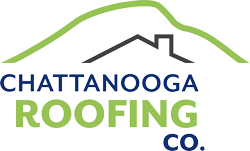
email us
ted@chattanoogaroofingco.com

call us now
(423) 308-ROOF
chattanooga roofing
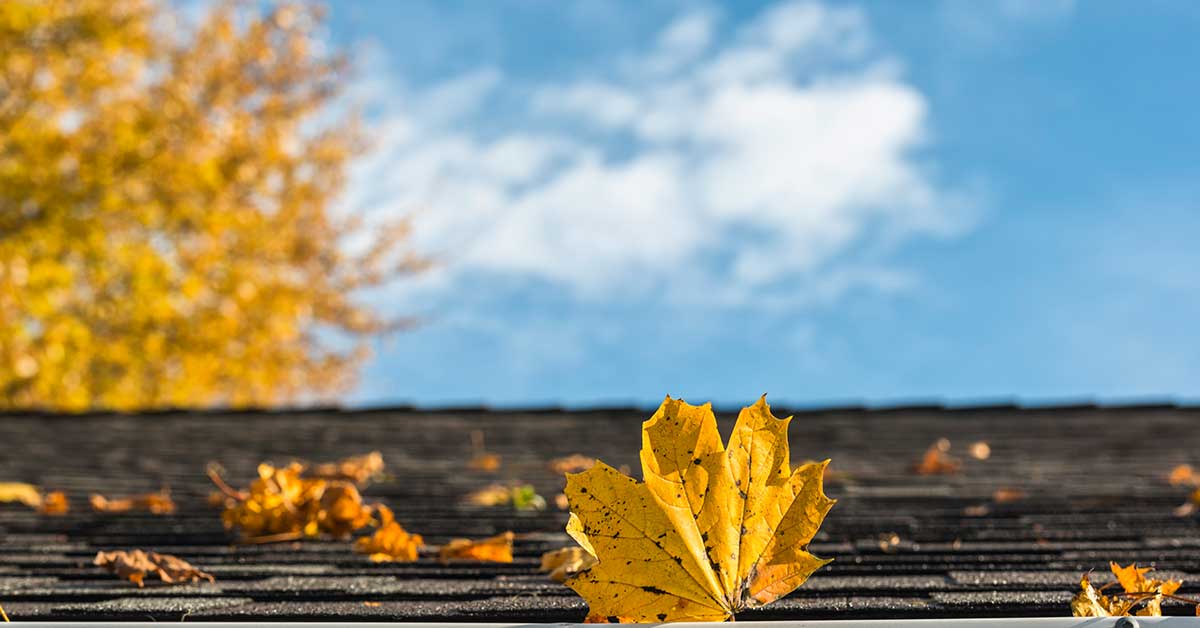
03 Oct. 2018
6 Reasons Why to Replace Your Roof in the Fall
Summer is sunny and spring is balmy, but there are more reasons why to replace your roof in the fall. When it comes time to install a new roof, there’s no better season. Not too hot, not too cold, not too wet (usually). It’s a good time to prepare your home’s protection against winter weather.
You’ll want to schedule your roof replacement in advance because your roofing contractor will be busy during this time of year. But why is he so busy? Because homeowners are starting to figure out that fall is the best time for roof replacement. Allow for schedule flexibility and you should enter winter with a snug new roof over your head.
Ready to discover what many homeowners already know? Read on to learn more about why to replace your roof in the fall.
6 Reasons Why to Replace Your Roof in the Fall
If you know your roof needs repair or replacement, you should wait until autumn for this short list of reasons.
1. Stormy Season is Over
Spring and summer have far worse weather than fall, in terms of severe rainfall and winds that can damage roofs. The generally milder weather of fall makes it the perfect time to replace your roof without being interrupted by strong wind and thunderstorms.
2. Conditions Couldn’t Be Better
Roofing professionals consider temperatures between 45 and 50 degrees Fahrenheit the best-case scenario for installing roofing. That range is especially important if you’re having an asphalt shingle roof installed. In these conditions, your shingles will be able to form a thermal seal, bonding with each other and the roof. And your roofers will be able to work faster without overheating.
3. Cold Weather Hasn’t Fully Hit
When the temperature drops, shingles get harder to work with. They can become brittle, vulnerable to breaking when your roofer is using a nail gun. That means the job will take longer (and cost more) because brittle shingles require hand nailing.
4. There’s Time for Proper Sealing
Get your roof replaced in fall to give the shingles time to form a proper bond with the roof. They won’t be able to bond perfectly once wet, cold weather hits your area. A better bond means better insulation and protection from damp.
5. Winter Storms May Come
What can make a damaged roof worse? Harsh, cold weather. Over the winter, holes can get larger and leaks can become worse. You’re better off entering winter with a sound roof over your head.
6. You Could Save on Heating
Because roofing gets thinner over its lifespan, its insulation ability gets weaker and weaker. That’s one of the best reasons why to replace your roof in the fall. If you do so, you’ll benefit from better insulation all winter long. After all, who doesn’t want a lower heating bill?
Now you know why to replace your roof in the fall. With such compelling reasons, there’s no time like today to get the job done. Call Chattanooga Roofing at (423) 308-ROOF or schedule your free roof replacement estimate online today.
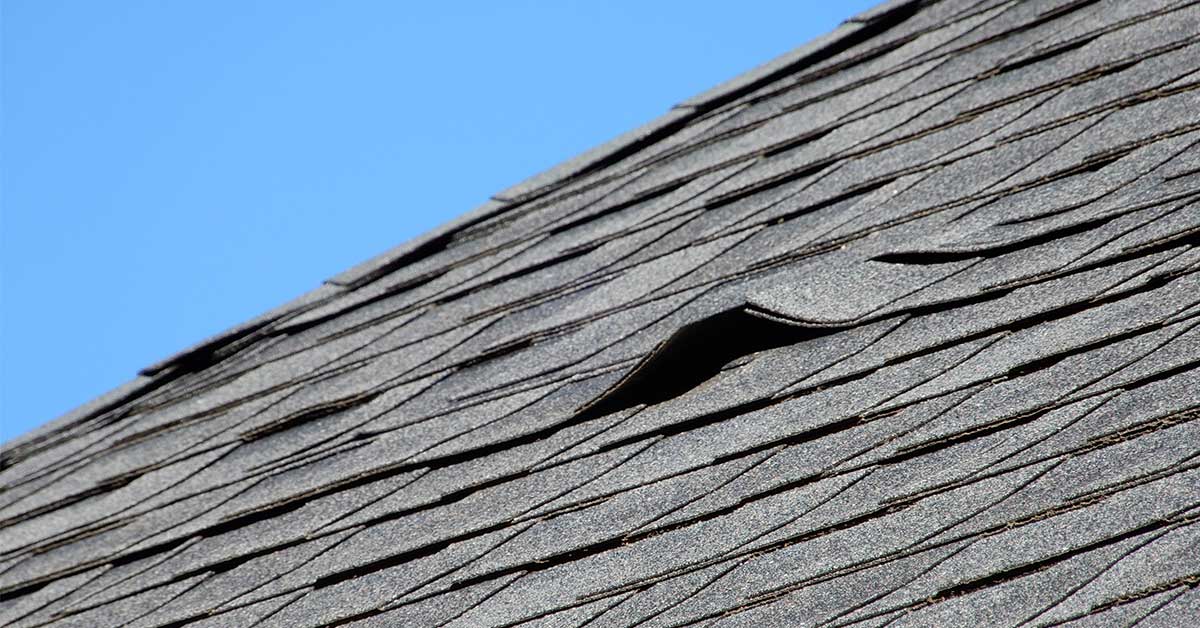
06 Sep. 2018
Roof Damage From Wind: What Is It, and How Can I Spot It?
According to Travelers Insurance, roof damage from wind made up an astonishing 25 percent of all homeowners insurance losses from 2009 to 2015. High winds can damage your roof, especially if it’s older or if your home is often exposed to forceful wind.
Wind can cause a few different kinds of damage to your roof. These include leaks, torn away or broken shingles, and gutter blockage. Asphalt shingle roofing receives the most damage from wind – even though it’s sturdy and rated to hold up under 90 mph gusts. If the wind is sustained, it can wear away at the integrity of shingles and start to damage them at 50 mph. Knowing how to check for roof damage from wind is vital to your home’s long-term health.
What Is Roof Damage from Wind?
Wind is unpredictable. It can damage areas that seem strong while leaving weaker areas alone. That’s because the wind doesn’t hit the entire surface of your roof with the same amount of strength. Corners, edges, and the exposed ridge suffer most frequently from wind damage.
For instance, where shingles hang slightly over the edge of your roof, wind can get under it and curl it up – or even rip it clean off. This is the type of damage that’s easiest to spot visually. Anytime wind removes a shingle, the roof will develop a leak in that spot (and anywhere below it, since water runs downward).
In addition, high winds can “lift” shingles without removing them. Most often, this is caused by suction from the wind passing over the top of the shingles, rather than getting under them. In this case, your roof may look intact from the ground. But all the while, water is seeping underneath the loose, lifted shingles. Lifted shingles lead to broken sealant – and leaks over time.
As another example, debris blown by high winds can tear apart your shingles. Tree limbs are a particularly common culprit here, so make sure you trim away any branches that reach over your roof. If you have trees next to your house, you’re likely to experience this type of roof damage from wind. In fact, high winds don’t cause as much damage as the debris blown by them does. They may look pretty, but those overhanging trees are a hazard.
How Can I Spot Roof Damage from Wind?
Look for these signs of roof damage caused by high wind.
1. Leaky Roof
Leaks in your roof are the easiest way to spot damage. However, a leak is the last thing you want. Don’t wait until your ceiling is dripping to check for damage. After each session of high winds, check for damaged shingles before you have a water problem. And, if a leak does appear, call a trusted roofer right away!
2. Missing, Lifted, or Curled Shingles
You should be able to spot missing and curled shingles from the ground. Look especially at the roof’s stress points: edges, corners, chimney, valleys, and ridgeline. These spots will let water through to the sub roofing – and into your home.
On the other hand, lifted shingles are hard to spot unless you’re on the roof. What may have happened is that the nails have become looser, and the layer of sealant may be broken. You’ll want to have your roof professionally inspected from time to time, especially if your roof has a steep pitch or your home has more than one story.
3. Granules in the Gutter
Extreme wind and pounding rain can strip protective granules from your shingles, washing them into the gutter. After a rainstorm, especially one accompanied by high wind, check the gutter for an excess of granules. If you find more than normal, call a roofer to check the shingles.
4. Damaged Chimney Flashing
This should be a quick check, but you’ll need to be on the roof to do it. Inspect the flashing around the chimney to see if it’s split or missing. Because it’s a vulnerable stress point, your chimney flashing is an especially common location for roof damage from wind.
Like always, a high-quality roof installed by an experienced roofing professional is your best defense against wind damage. Don’t cheap out – you may end up paying more in the long run. Call a licensed and insured roofer with decades of expertise, like Chattanooga Roofing Company. We’d be happy to inspect your roof for wind damage and give you a free estimate!
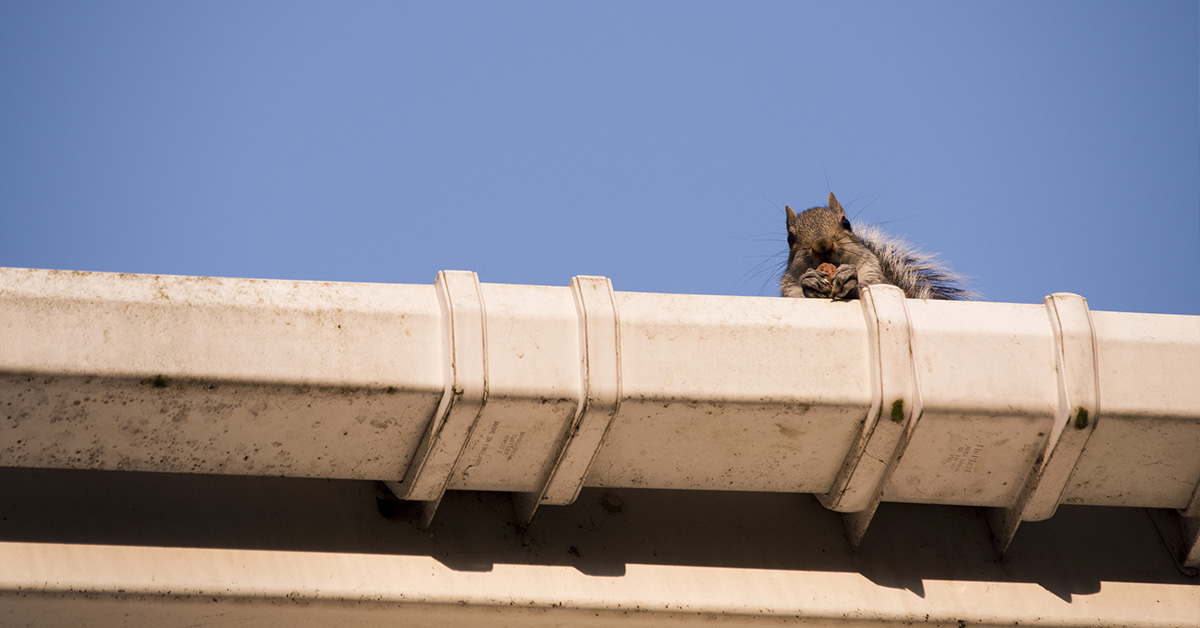
02 Mar. 2018
What Should You Do if Pests Damage Your Roof?
You don’t want to find pests anywhere inside your home – especially your roof. If your roof has any weak spots, animals will often find a way to burrow inside and hibernate during the colder months. In fact, winter is when most pest damage happens. As temperatures rise and rain falls, unfixed damage can wreak havoc on the walls and roof of your home. So, what should you do if pests damage your roof?
First, let’s look at which pests cause the most roof damage. After all, knowing your enemy is half the battle.
Which Pests Damage Your Roof?
Here in the south, we see lots of problems with pests like squirrels, mice, rats, beetles, termites, ants, and even bees. Each of them can cause different types of damage to your home.
1. Termites
Termites are especially known for invasions around areas where there is mold or rotted wood. Termites will build colonies in and weaken wooden roof structures, leading to loosened roof tiles or shingles.
2. Birds and Bats
Birds and bats will build nests inside your home and can leave unpleasant droppings. They can both get in through rotten fascia boards. You can prevent further incursions by replacing those boards.
3. Hornets and Wasps
Hornet and wasp nests can attract other insects that cause damage to your roof when left alone. Wasp nests also attract termites, leading to extensive wood damage.
4. Squirrels
Squirrels cause issues with electrical materials when they gnaw and chew on wires, pipes, structural supports, or shingles in order to get into your attic. They usually leave behind urine stains and unpleasant odors.
5. Mice and Rats
Like squirrels, mice and rats commonly chew and gnaw on roofing and structural materials. Their presence can expose your family to disease or disgusting droppings and odors.
What Can I Do About Pest Damage?
Get an exterminator – and then call a professional roofer like Chattanooga Roofing Company to fix the damage! When pests damage your roof, we’ll handle all roof and fascia repairs efficiently and effectively. We can repair any damage done and prevent further infestations, so next winter your home will be safe from pests and vermin.
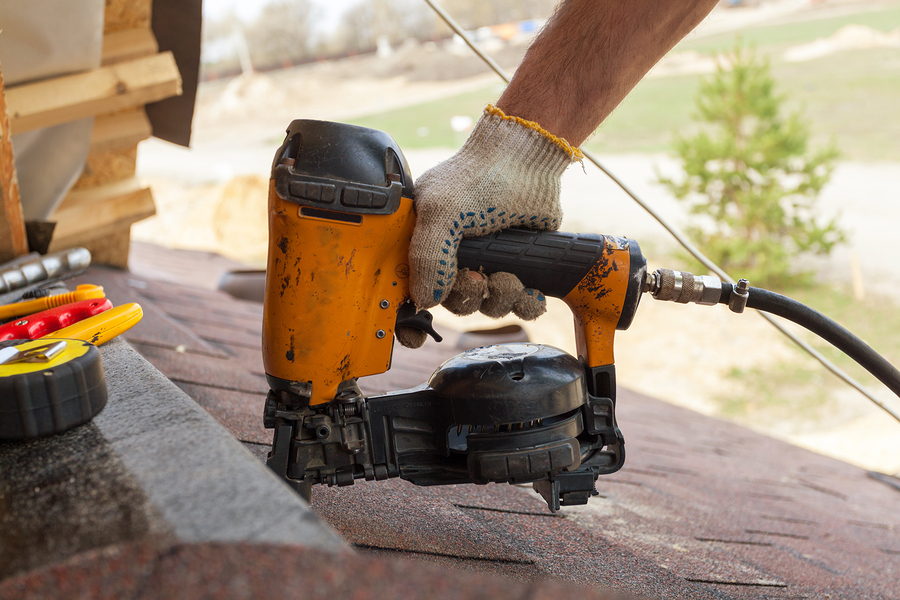
24 Nov. 2016
Before You Hire A Roofing Contractor
Well, your roof needs repair. Or maybe you even need a full replacement. Either way, you’re getting ready to look for the right roofing contractor. Before you hire a roofing contractor, you need to know what questions to ask them. As you search, you can make an informed decision by weighing the answers your prospective contractor gives.
Cost and completion time are obviously big questions. So big, in fact, that we’re just assuming that each customer will ask them. “How much, and how long?” Your choice depends on your budget and scheduling needs.
Know what? Price matters. You should be skeptical of any roofing contractor that comes in with a far lower bid than anyone else. They’re probably not experienced enough to know the true costs of re-roofing your home. Either they’re just trying to get the job, or they have no clue how much materials and labor are involved.
Do your research before making your choice. If you choose the right roofer, even if they’re not the cheapest, you’ll be confident that your roof will be in good shape for a long time.
Questions to Ask Before You Hire a Roofing Contractor
Don’t be shy – fire away. The more direct your questions are, the better chance you’ll have of getting straight answers.
1. Exactly what does the job require?
Stay away from any roofer who doesn’t want to get into specifics. For instance, if you have more than one roofing layer, they all have to be removed before installation of any new material. Make sure your roofer will be replacing all flashing and installing rubber membrane at the eaves to avoid leaks from ice dams and backed up leaves.
2. Can you show proof of insurance?
You need to see a proof of policy from the roofer’s insurance company, showing both liability and workers comp coverages. Any roofing contractor can say they’re insured. Make them show you. Any roofer who deserves your business will be happy you asked. Do not, I repeat do not, hire a roofer without insurance, bond, and full license. Chattanooga Roofing Co. always stays current with all forms of authorization and insurance.
3. What’s your warranty?
In addition to providing a roofing material warranty, your ideal roofing contractor should also guarantee their workmanship. Look for a roofer with a 1-2 year warranty, and make sure the terms are included in the contract you sign with them.
4. Where can I view a current job site?
Want a clear picture of how a roofer goes about their business? Go to a job site and check out their work. Are they working efficiently? Is the site generally clean? Are they diligent or do they seem like they wish they were watching TV? A roofer who’s confident in their team’s quality should be happy to hear you ask this question. They look forward to getting the job based on the strength of their work.
5. Who are your subcontractors?
Most roofing companies use subcontractors, at least some of the time. It’s not a problem. The reason you’re asking is to learn who they are. You want to make sure they carry their own insurance and licensing. Also, make sure that an experienced foreman will be on the job with any subcontractors.
6. Can you give me references from past jobs?
Go one step further than simply getting references. Actually call them, or email if you don’t have their phone number. The experience of a happy (or regretful) customer can be very revealing. Among other questions, ask if their roof was finished on time and on budget.
7. What shape will you leave my property in each day and at job completion?
You’re the one paying for the roofing project. That should exempt you from cleaning up the mess. Make sure the contractor will be using tarps to catch all debris, and that they’ll haul it all away. Confirm that they’ll sweep a magnet over the lawn and garden to pick up any stray nails. Cleanup is normally part of the estimate. If it’s not, ask for it to be added at no charge.
Your home isn’t secure without a good roof. Fortunately, if you ask the right questions up front, you’ll end up with a great roof from a trustworthy roofing contractor. The more you know, the more roof repairs or roof replacements will give you peace of mind. Talk to you soon!
visit Us: 529 S. Germantown Rd. Chattanooga, TN 37411
email us: ted@chattanoogaroofingco.com
24/7 Emergency call (423) 308-ROOF
